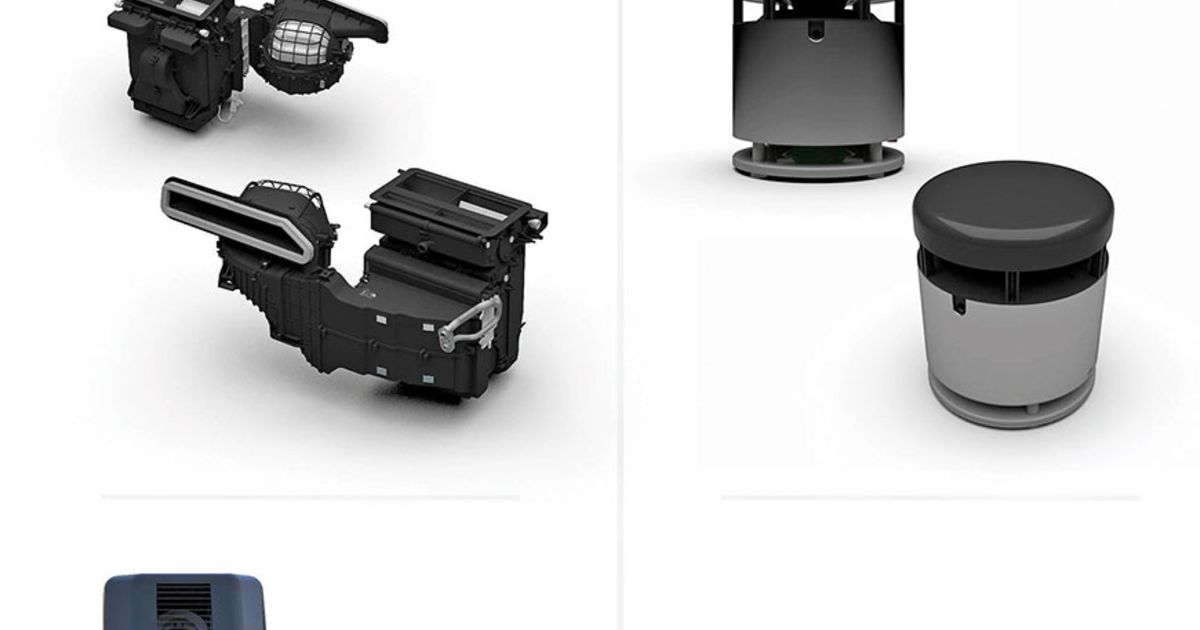
Supplier Marelli‘s new design for a vehicle air quality system combines two ultraviolet lights to kill airborne bacteria and viruses as well as eliminate volatile organic compounds and odors in the air.
Like other purification systems, Marelli’s IAQ uses UVC light to take care of viruses. But its key differentiator is the simultaneous use of UVA, which the supplier says can get rid of volatile organic compounds and odors. The technology takes a step beyond other ionizer-based systems, which require frequent cleaning, and traditional filters, which are unable to capture gases, fumes and viruses small enough to pass through them.
The dual-UV system is designed to work around those limitations, said G.D. Mathur, a senior technical specialist at Marelli who spearheaded the technology’s development.
“Ultimately, everything is reduced to a water molecule or CO2,” he told Automotive News. “That’s the basic principle.”
Work on the innovation by Mathur and others began in 2017, but the commercial rollout comes at an opportune time for the supplier, which has been under financial pressure in recent months. For many consumers, the COVID-19 pandemic has driven home the importance of promoting better air quality and ventilation, and Marelli sees an opportunity to appeal to them.
“We are thinking this could easily become $500 million from a sales perspective,” Mathur said.
The company developed three versions of the IAQ system, which it says can destroy more than 99 percent of airborne viruses and bacteria, including the virus that causes COVID-19, within 15 minutes, in addition to eliminating odors:
1. An HVAC unit that can be installed inside the cockpit or ducts. Marelli said it can be “fully integrated and invisible to vehicle occupants” and can be used for passenger vehicles as well as public buses and trains.
2. An aftermarket standalone unit that can be mounted onto a dashboard or vent, or fit into a cupholder. It is powered through a USB charger or a vehicle’s cigarette lighter.
3. A unit designed for the commercial market, including in homes and offices. Marelli said it will sell the indoor unit through office furniture manufacturers and retailers.
IAQ uses UVC light and a titanium dioxide filter to attack viruses and bacteria. When UV light hits the filter, electrons are released, Mathur said.
Those electrons interact with water molecules to form hydroxyl radicals, reactive molecules that kill bacteria and viruses by inactivating their DNA and RNA, which are needed to reproduce, Mathur said.
“These hydroxyl radicals attack basically all viruses or bacteria and any pathogen that is floating in the air. It essentially zaps them and kills them,” he said.
But the use of both UVC and UVA light, which use different frequency ranges, is key to the patents the supplier has for its system, Marelli said in a news release. It won a 2022 CES Innovation Award in November.
Mathur said Marelli has entered into contracts for the technology, including with an auto customer based in the U.S. He said Marelli also is in advanced talks with customers in Europe and India.
One discussion underway with a major European automaker entails installing small IAQ units into the air ducts of some of its high-end vehicles.
Mathur said Marelli sees the IAQ system becoming a major selling point for vehicles with it installed, as customers remain more cognizant of airborne diseases amid the pandemic.
“It would be a great marketing tool to sell a vehicle,” he said. “If I go to buy a car and they tell me I can buy this option for $500, I’m sure I would go for it because I want to protect my family.”
One of Marelli’s biggest Japanese customers is talking with the supplier about installing indoor units for its offices and manufacturing sites, according to Mathur. He said the technology has “great potential” at plants to help cut the spread of viruses and keep employees from getting sick.
“We want to protect every worker on the shift,” he said. “The potential is enormous on both the automotive side and other applications.”
Marelli ranks No. 18 on the Automotive News list of the top 100 global suppliers, with worldwide parts sales to automakers of $11.57 billion in 2020.